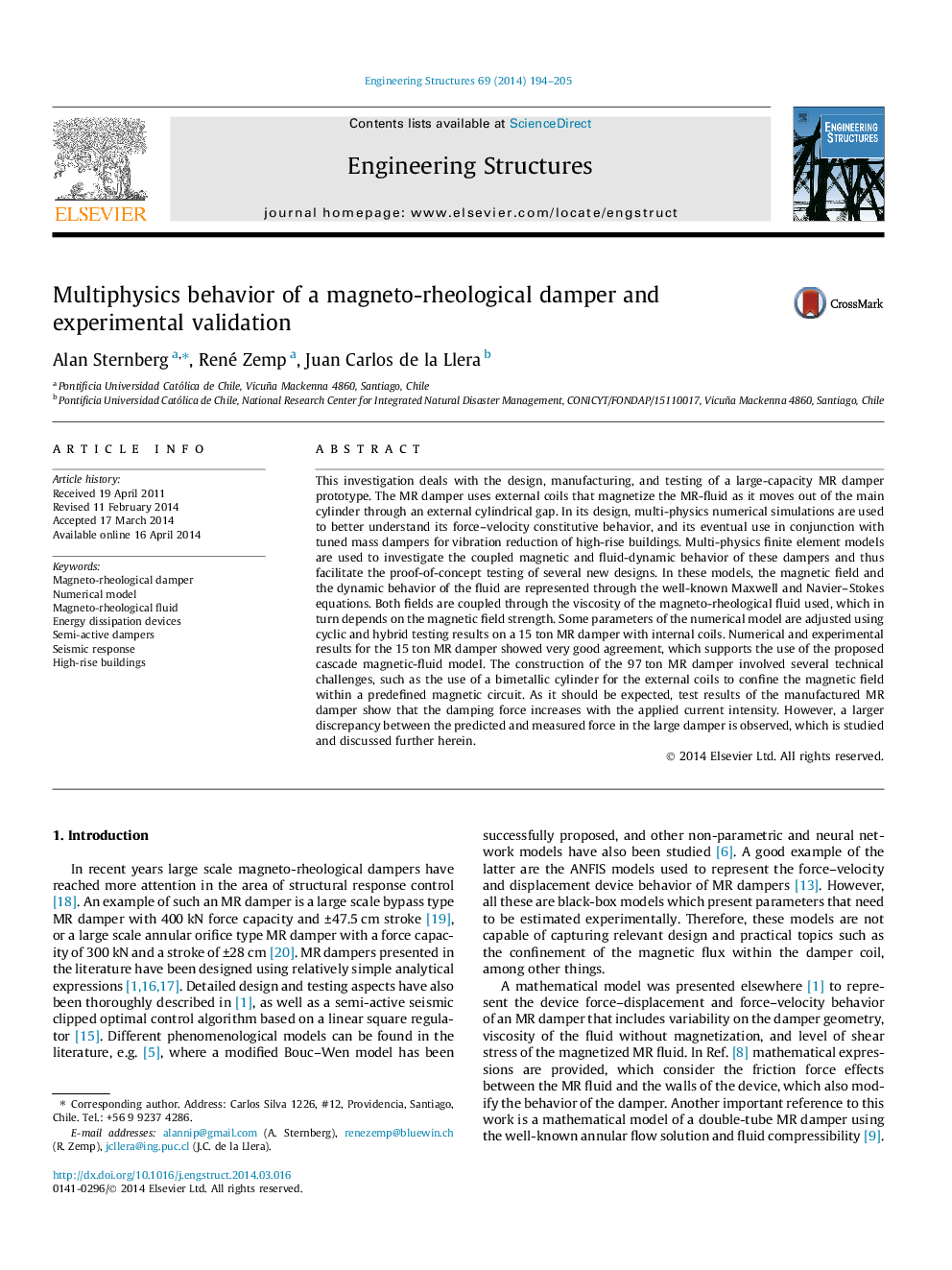| Article ID | Journal | Published Year | Pages | File Type |
|---|---|---|---|---|
| 266757 | Engineering Structures | 2014 | 12 Pages |
•A 3D numerical FE model for large-scale MR dampers is presented.•The model aims to develop an MR damper design tool.•The model was validated with experimental results of an existent 15-ton MR damper.•A 97-ton MR-damper with an innovative configuration was designed and manufactured.•Initial harmonic tests prove that the MR damper concept design works in practice.
This investigation deals with the design, manufacturing, and testing of a large-capacity MR damper prototype. The MR damper uses external coils that magnetize the MR-fluid as it moves out of the main cylinder through an external cylindrical gap. In its design, multi-physics numerical simulations are used to better understand its force–velocity constitutive behavior, and its eventual use in conjunction with tuned mass dampers for vibration reduction of high-rise buildings. Multi-physics finite element models are used to investigate the coupled magnetic and fluid-dynamic behavior of these dampers and thus facilitate the proof-of-concept testing of several new designs. In these models, the magnetic field and the dynamic behavior of the fluid are represented through the well-known Maxwell and Navier–Stokes equations. Both fields are coupled through the viscosity of the magneto-rheological fluid used, which in turn depends on the magnetic field strength. Some parameters of the numerical model are adjusted using cyclic and hybrid testing results on a 15 ton MR damper with internal coils. Numerical and experimental results for the 15 ton MR damper showed very good agreement, which supports the use of the proposed cascade magnetic-fluid model. The construction of the 97 ton MR damper involved several technical challenges, such as the use of a bimetallic cylinder for the external coils to confine the magnetic field within a predefined magnetic circuit. As it should be expected, test results of the manufactured MR damper show that the damping force increases with the applied current intensity. However, a larger discrepancy between the predicted and measured force in the large damper is observed, which is studied and discussed further herein.
